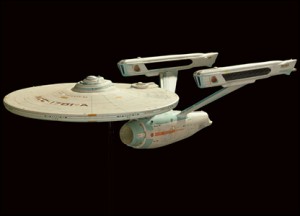 As I was leading a journey map session this week, one participant asked, “When you’re putting in the customer’s steps on the journey, how do you know which ones to include? It feels like it could get really long”
As I was leading a journey map session this week, one participant asked, “When you’re putting in the customer’s steps on the journey, how do you know which ones to include? It feels like it could get really long”
My response was that, from what I can tell, Captain Kirk never goes to the bathroom.
She paused, clearly trying to decide whether I was saying something insightful or just stupid. I don’t know if she ever decided which it was.
My point is that a great journey map is a story about your customer. Just like with most movies, your first draft is probably has too much in it - similar to a 4-hour film. You need to pare back the unnecessary details – the one-off problems, the personal examples that aren’t critical to the story, or the deep details that may help analyze a particular touch point, but don’t contribute to the overall story. Just like the bathrooms in the Enterprise.
And, as with a movie, people will differ on what to cut. But cut, you must, to make your story clear.
So, how do you decide what to remove?
The first thing I do is to ask participants to tell me the 20-second story behind their journey map. And I’ll time them. If you can’t tell the overarching story in 20 seconds, you are too far in the weeds.
An example from our mapping session: “Amanda [our persona] is continually frustrated as she tries to figure out what kind of health insurance she should buy.” The story is all about the complexity she faces in a stressful situation, and how the company overwhelms her with choices.
Once you have your 20-second story, ruthlessly go through each step in your journey map to find out what doesn’t fit in that story. If there’s a particularly compelling step that doesn’t fit, you’re either telling the wrong story, or it doesn’t really fit.
For example, two details we uncovered are that Amanda hates high deductibles, and she wants to know how much her doctor will charge her once she has her insurance. These are great nuggets, and you definitely want to capture them. Perhaps you should even create a second map that discusses her ongoing experience. But these do not fit into Amanda’s story about purchasing health insurance, so you need to cut them.
A great journey map helps to communicate your top areas to improve. Only by ruthlessly cutting can you create a compelling map with a clear message. Otherwise you could be creating the journey mapping equivalent of Heaven’s Gate. And nobody wants that.



